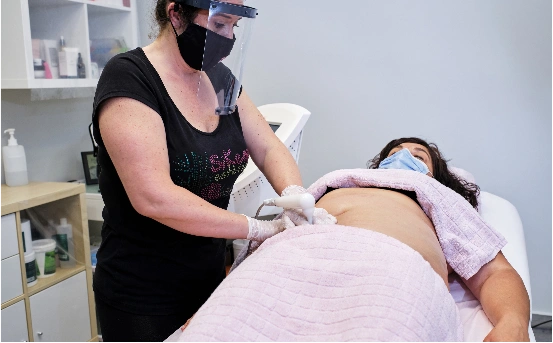Obsessive Compulsive Disorder (OCD) is a common yet often misunderstood mental health condition that affects people of all ages. Characterized by recurring, unwanted thoughts (obsessions) and repetitive behaviors (compulsions), OCD can significantly impact daily life, relationships, and overall well-being.
OCD is a mental health condition that affects millions of people around the globe children, teenagers, and adults alike. It is marked by a persistent cycle of disturbing, unwanted thoughts (obsessions) and the overwhelming urge to perform specific repetitive behaviors or rituals (compulsions) in response. These thoughts and actions are not a choice; they are driven by anxiety, fear, and an urgent need to feel “just right” or to prevent something bad from happening.
What is Obsessive Compulsive Disorder?
Obsessive Compulsive Disorder is a chronic mental health condition where individuals experience a cycle of obsessions and compulsions. Obsessions are persistent, intrusive thoughts, images, or urges that trigger intense anxiety or distress. Compulsions, on the other hand, are repetitive behaviors or mental acts a person feels driven to perform to reduce the anxiety caused by the obsessions.
Contrary to popular belief, OCD is not simply about being neat or organized. It is a serious psychological condition that can become debilitating if left untreated. People with OCD often recognize that their thoughts and behaviors are irrational, but they feel powerless to stop them.
Common Symptoms of OCD
The symptoms of OCD typically fall into two categories: obsessions and compulsions. Most people with OCD experience both, although some may experience only one type.
Obsessions may include :-
- Fear of contamination by germs or dirt
- Intense concern with order or symmetry
- Intrusive thoughts of harming oneself or others
- Fear of forgetting something important (like locking doors)
- Unwanted taboo thoughts involving religion, sex, or violence
Compulsions may include :-
- Excessive handwashing or cleaning
- Repeatedly checking things (like stoves or locks)
- Counting, tapping, or repeating certain words
- Arranging objects in a specific order
- Seeking reassurance from others
These behaviors are not performed out of enjoyment or habit, but rather as a response to the obsessive thoughts, in an attempt to gain temporary relief from anxiety.
What Causes OCD?
The exact cause of Obsessive Compulsive Disorder is not fully understood, but research suggests that a combination of genetic, neurological, behavioral, cognitive, and environmental factors may play a role.
- Genetics :- Studies indicate that OCD can run in families. People who have a first degree relative with OCD are more likely to develop the disorder themselves.
- Brain Structure and Functioning :- Differences in brain structure and the functioning of certain neurotransmitters, particularly serotonin, may contribute to the development of OCD.
- Environmental Stressors :- Childhood trauma, abuse, or significant life changes such as a death in the family or a major transition may trigger the onset of OCD symptoms.
- Behavioral Conditioning :- Some theories suggest that OCD behaviors may develop as learned responses to anxiety, which are reinforced over time through repetition.
How OCD is Diagnosed?
Diagnosis of OCD is typically made by a mental health professional based on a clinical evaluation. There is no specific lab test to diagnose the disorder, but doctors often use psychological assessments and interviews to understand a patient’s symptoms and their impact on daily life.
For a diagnosis, the obsessions and compulsions must be time consuming (more than an hour per day), cause significant distress, and interfere with social, occupational, or other important areas of functioning. It is also important to rule out other mental health conditions that may have similar symptoms, such as generalized anxiety disorder, depression, or tic disorders.
Treatment Options for OCD
Fortunately, OCD is treatable. A combination of psychotherapy, medication, and self-care strategies can help manage symptoms effectively.
- Cognitive Behavioral Therapy (CBT) :- One of the most effective treatments for OCD is Cognitive Behavioral Therapy, particularly a type known as Exposure and Response Prevention (ERP). This involves gradually exposing a person to the source of their obsession and helping them refrain from engaging in the compulsive behavior. Over time, this reduces anxiety and breaks the cycle of obsession and compulsion.
- Medication :- Selective Serotonin Reuptake Inhibitors (SSRIs) are commonly prescribed for OCD. These medications help regulate the levels of serotonin in the brain, which can improve symptoms. In some cases, other medications like antipsychotics may be used as well.
- Lifestyle and Self-Help :- Regular exercise, a healthy sleep schedule, and mindfulness techniques like meditation or deep breathing can support overall mental well being. Joining OCD support groups or engaging in journaling may also help individuals feel less alone in their struggle.
In severe cases where OCD symptoms are resistant to therapy and medication, more advanced treatments like deep brain stimulation (DBS) or transcranial magnetic stimulation (TMS) may be considered under specialist care.
Living with OCD
Living with OCD can be challenging, but many people lead fulfilling lives with the right treatment and support. It’s important to recognize the signs early and seek professional help as soon as possible. Avoiding triggers or compulsions can temporarily relieve anxiety but usually worsens symptoms in the long run. Instead, facing fears under the guidance of a trained therapist can lead to long-term recovery.
It’s also crucial for family and friends to offer understanding and support. Shaming or minimizing the condition can worsen symptoms. With patience and encouragement, loved ones can play a vital role in the recovery process.
OCD in Children and Teens
Obsessive Compulsive Disorder is not limited to adults. Children and adolescents can also develop OCD, although the symptoms may manifest differently. For instance, children might be unable to explain their obsessions clearly but show repetitive behaviors like excessive handwashing or arranging toys in a specific way. Early intervention can prevent the disorder from worsening and help the child lead a healthy, balanced life.
When to Seek Help?
If obsessive thoughts or compulsive behaviors are interfering with your daily life, causing distress, or consuming a significant amount of time, it is crucial to seek professional help. OCD rarely goes away on its own, and delaying treatment can lead to worsening symptoms and additional complications such as depression or social isolation.
Conclusion
Obsessive Compulsive Disorder is a serious but treatable mental health condition. Understanding the difference between normal routines and OCD behaviors is the first step toward getting the right help. Through a combination of therapy, medication, and support, people with OCD can manage their symptoms and regain control over their lives.























